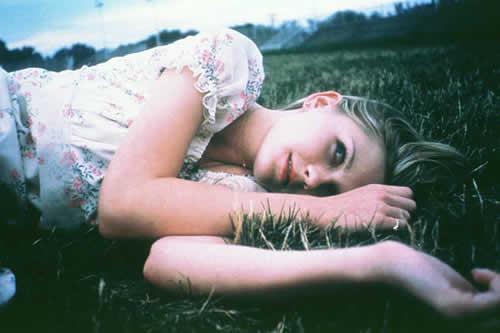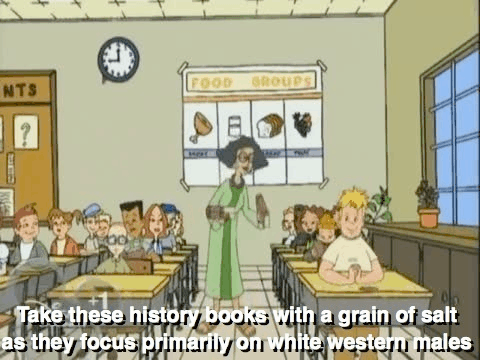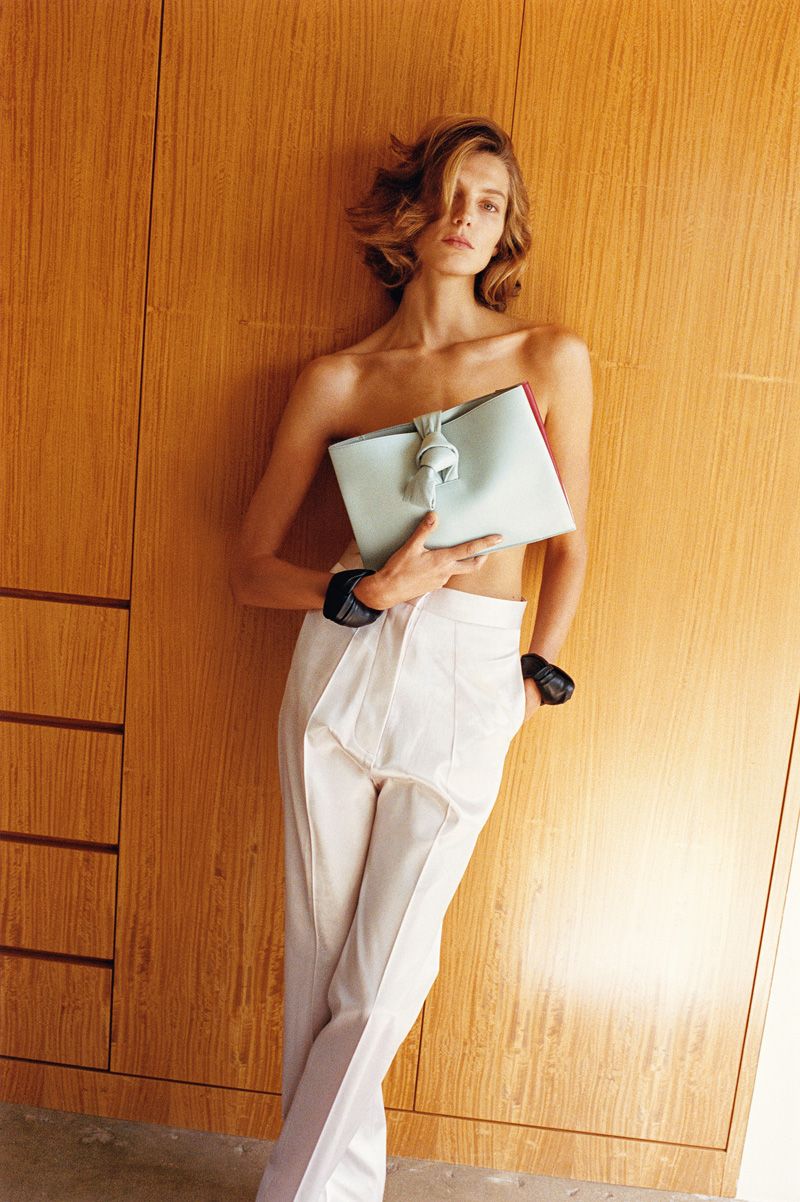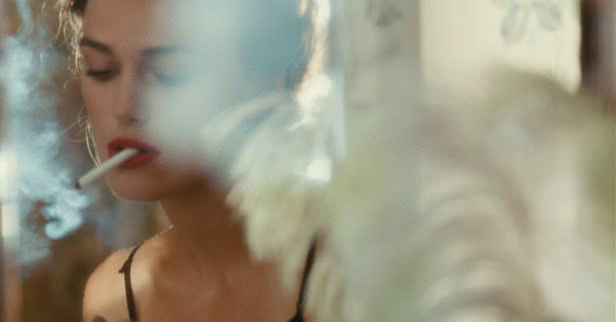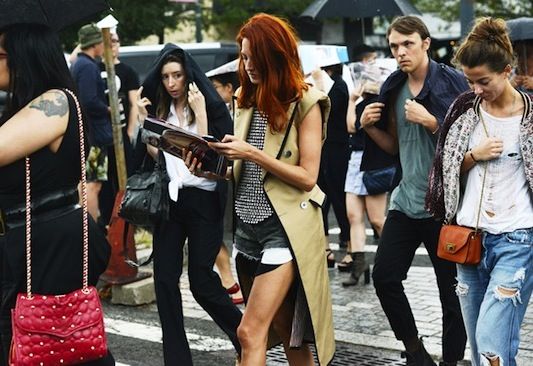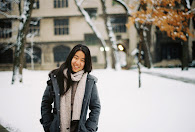Tomorrow, or rather today, I'm leaving for Berlin just for this weekend. My film camera's lens is unfortunately broken (does anyone know what to do about stuck blades in a lens?), so alas I won't be capturing photos that way. However, I'm starting to update my photography blog again which can be found here.
In other news, my friend Bijan who recently graduated from Yale is starting a new summer project called Tarry Magazine. Submit written work (prose or poetry) or visual/audio work here. The theme of the month is "Getting Drunk" (in the Baudelarian sense, not the fratty sense; though I do think Baudelaire would know how to get down at a frat party if he had to as he was all about drinking and doing drugs and getting women--maybe someone should submit an illustration of Baudelaire drinking some Natty Light and wearing nantucket red).
There's so much to write about, especially I hope after my trip to Berlin (this is my first time going and probably my last trip outside of Paris before I head to San Francisco in less than two weeks!).
So watch this space
Wednesday, May 29, 2013
Thursday, May 23, 2013
009
carefree white girls
(Or: What you're talking about when you're talking about style)
About a week ago one of my good friends from high school Yunyi sent me the link to this tumblr called carefree white girl. The tumblr was meant to call attention to the "deification of white womanhood" in popular culture. Yunyi and I both had a good laugh that someone was clever enough to come up with such a tumblr, but when our conversation moved elsewhere I sorta forgot about it.
But sometimes when you're paying attention, you start to connect the dots between recurring themes that pop up in your life. I feel like I've lived the past twenty-one years vaguely skimming such themes on the surface-- the fashion magazines I peruse, the movies I watch, and the people I see on TV-- all proliferate the same notion of beauty, but I hadn't really been paying attention. Indeed, the scariest part is that even though I consider myself an open-minded person, even though I am a person of color--a hyphenated American-- I am so inundated by notions of this one standard of beauty that it's difficult at times for me to question my own notions of what I consider beautiful and how easily they conform to this said standard.
For example, I've started to write some pieces for my school's fashion and lifestyle website modachicago.com. As I was brainstorming ideas for what to write about next I thought it would be cool to do a weekly or bi-monthly post on the fashion inspiration I derive from movies, more particularly stills that are taken from movies. Because I mean sometimes when I'm watching a film everything comes together--soundtrack, scenery, style--that makes me want to extract that particular moment and transfer it to my own life.
So I started to compile a list of movies I could include in these posts. I started with Sofia Coppola because each of her movies has such a singular, cohesive aesthetic: The Virgin Suicides, Marie Antoinette, Lost in Translation. And then I thought about how much I loved the cinematography and costume design for Joe Wright's films with Keira Knightley: Pride & Prejudice, Atonement. Then An Education with Carey Mulligan, The Graduate for more of the 60s style echoed in An Education. The list started to grow and then I started to look for film stills from each of the movies to make my blog post.
This blew me away. It seriously did. Because the thing is I knew this on an intellectual level--I had read about this, talked about this, understood the joke behind the "carefree white woman" tumblr but I had never really noticed how I perpetuated this idea, that I was implicated in this vicious cycle as well.
A couple minutes later, for various reasons, a) I'm a millennial with an attention that spans all of 2 minutes b) I was so freaked out by my realization that I needed to distract myself, I found myself watching a TEDtalk, funnily enough, of the model Cameron Russell. Her talk was entitled Looks aren't everything. Believe me, I'm a model. and she ended up talking about this very same phenomenon. I think it's worth it for everyone to watch the video for himself or herself, but Russell essentially gives the answers to questions she is repeatedly asked: "how did you become a model?" "could I become a model?" etc.
Her answer to the first question? The genetic jackpot and legacy. What she means by the second thing is that for hundred of years now--essentially since our country's inception and even before with the European influence carried over by the, well, Europeans--our culture has constantly perpetuated the idea that the white woman is the standard of beauty. And over the past decades, it has narrowed down to a construction that is even more specific: a skinny young white woman with a symmetrical face, flawless complexion, and shiny hair.
This is not to say that there is something wrong with Carey Mulligan or Sofia Coppola or the fashion of white women (and men) in the 1960s or any of that. There is only something wrong when these figures and these modes of style are the dominant ideals of beauty and style (think about the whole media frenzy after the release of Marie Antoinette with Kirsten Dunst being shot by Annie Leibovitz for September 2006 issue of Vogue putting French 18th century style back on the map. Or, the mayhem surrounding Keira Knightley's stunning emerald green gown in Atonement. I can't think of one non-white actress getting as much buzz playing a role that doesn't fit into this European or western-centric notion of what is fashionable). It starts to become problematic when I can barely count the number of non-white women I view as style icons on one hand (Solange Knowles, Liu Wen, Daul Kim, Janelle Monáe) and it becomes even more problematic when I realize that none of these women have the same influence in the mass media as their white counterparts (of course, I have agency over who I decide to view as influential or not, but how much do I really?).
It's obviously difficult to uproot one's entire notions of what is beautiful or what is stylish or chic or fashionable in one fell swoop. However, the intersection of these seemingly disparate moments in my life has forced me to think about my personal conceptions of all these construction and to question how my own perceptions of myself and my sense of style are shaped by mass media representations...
(Or: What you're talking about when you're talking about style)
from left to right: Poppy Develigne, Candice Swanpoel, Kirsten Dunst, Keri Russell
all sporting looks that I find lovely and would wear in a heartbeat
About a week ago one of my good friends from high school Yunyi sent me the link to this tumblr called carefree white girl. The tumblr was meant to call attention to the "deification of white womanhood" in popular culture. Yunyi and I both had a good laugh that someone was clever enough to come up with such a tumblr, but when our conversation moved elsewhere I sorta forgot about it.
But sometimes when you're paying attention, you start to connect the dots between recurring themes that pop up in your life. I feel like I've lived the past twenty-one years vaguely skimming such themes on the surface-- the fashion magazines I peruse, the movies I watch, and the people I see on TV-- all proliferate the same notion of beauty, but I hadn't really been paying attention. Indeed, the scariest part is that even though I consider myself an open-minded person, even though I am a person of color--a hyphenated American-- I am so inundated by notions of this one standard of beauty that it's difficult at times for me to question my own notions of what I consider beautiful and how easily they conform to this said standard.
For example, I've started to write some pieces for my school's fashion and lifestyle website modachicago.com. As I was brainstorming ideas for what to write about next I thought it would be cool to do a weekly or bi-monthly post on the fashion inspiration I derive from movies, more particularly stills that are taken from movies. Because I mean sometimes when I'm watching a film everything comes together--soundtrack, scenery, style--that makes me want to extract that particular moment and transfer it to my own life.
So I started to compile a list of movies I could include in these posts. I started with Sofia Coppola because each of her movies has such a singular, cohesive aesthetic: The Virgin Suicides, Marie Antoinette, Lost in Translation. And then I thought about how much I loved the cinematography and costume design for Joe Wright's films with Keira Knightley: Pride & Prejudice, Atonement. Then An Education with Carey Mulligan, The Graduate for more of the 60s style echoed in An Education. The list started to grow and then I started to look for film stills from each of the movies to make my blog post.
The Coppola Girls
Kirsten Dunst in the 2006 September issue of Vogue with a look
inspired by her role as the title character in Marie Antoinette
Scarlett Johansson in the 2003 film Lost in Translation playing
a role as the ultimate Lonely Girl opposite Bill Murray
A younger Dunst in the dreamy Virgin Suicides that has all the
best of late 90s aesthetic
Keira Knightley in Atonement
Carey Mulligan in An Education
I then started to notice a theme that was so evident once I realized it, that it seemed almost sinister--wrong-- that I hadn't noticed it before: every single one of the looks that I had in mind all featured a beautiful white woman sporting looks that beautiful white women wear.
This blew me away. It seriously did. Because the thing is I knew this on an intellectual level--I had read about this, talked about this, understood the joke behind the "carefree white woman" tumblr but I had never really noticed how I perpetuated this idea, that I was implicated in this vicious cycle as well.
A couple minutes later, for various reasons, a) I'm a millennial with an attention that spans all of 2 minutes b) I was so freaked out by my realization that I needed to distract myself, I found myself watching a TEDtalk, funnily enough, of the model Cameron Russell. Her talk was entitled Looks aren't everything. Believe me, I'm a model. and she ended up talking about this very same phenomenon. I think it's worth it for everyone to watch the video for himself or herself, but Russell essentially gives the answers to questions she is repeatedly asked: "how did you become a model?" "could I become a model?" etc.
Her answer to the first question? The genetic jackpot and legacy. What she means by the second thing is that for hundred of years now--essentially since our country's inception and even before with the European influence carried over by the, well, Europeans--our culture has constantly perpetuated the idea that the white woman is the standard of beauty. And over the past decades, it has narrowed down to a construction that is even more specific: a skinny young white woman with a symmetrical face, flawless complexion, and shiny hair.
This is not to say that there is something wrong with Carey Mulligan or Sofia Coppola or the fashion of white women (and men) in the 1960s or any of that. There is only something wrong when these figures and these modes of style are the dominant ideals of beauty and style (think about the whole media frenzy after the release of Marie Antoinette with Kirsten Dunst being shot by Annie Leibovitz for September 2006 issue of Vogue putting French 18th century style back on the map. Or, the mayhem surrounding Keira Knightley's stunning emerald green gown in Atonement. I can't think of one non-white actress getting as much buzz playing a role that doesn't fit into this European or western-centric notion of what is fashionable). It starts to become problematic when I can barely count the number of non-white women I view as style icons on one hand (Solange Knowles, Liu Wen, Daul Kim, Janelle Monáe) and it becomes even more problematic when I realize that none of these women have the same influence in the mass media as their white counterparts (of course, I have agency over who I decide to view as influential or not, but how much do I really?).
It's obviously difficult to uproot one's entire notions of what is beautiful or what is stylish or chic or fashionable in one fell swoop. However, the intersection of these seemingly disparate moments in my life has forced me to think about my personal conceptions of all these construction and to question how my own perceptions of myself and my sense of style are shaped by mass media representations...
Wednesday, May 22, 2013
008
Initially I started this blog in order to talk about fashion in a critical way. However now it is starting to (d)evolve into a free-for-all of my thoughts on poetry or television or mass culture or whatever I happen to be fixated on at this particular moment (that is to say, staying up until 5 am reading or watching everything pertaining to this one thing; last week it was The Bling Ring and all the people behind that. I ended up watching over and over a clip of Alexis Neiers, who is played by Emma Watson in the new Sofia Coppola movie, wigging out on Vanity Fair writer Nancy Jo Sales. You can watch the morbidly
hilarious clip here).
And last night... I stayed up till five in the morning watching the TV Show Recess.
I feel it's a shared experience by everyone in late teenhood and early adulthood to turn back to childhood favorites--movies, TV shows, books--with new eyes, as we have inevitably matured and grown up and learned some things about the world since taking these things in next to the glass of milk and cookies our parents used to set out for us on the table. Actually, it would kind of be a lie to say that my mom gazed protectively over me as I watched T.J. Detweiler and the crew get into shenanigans that played out and resolved in 10 minutes time, as she rarely ever let me watch TV. I would catch up on the show during the odd early morning playings on Saturdays or Sundays when she was at work, wishing I could be as carefree and savvy and adventurous as the gang at Third Street Elementary School. Either way, it was such a pleasant surprise to find that this show I had loved so much in childhood lived up to my expectations even now.
Rife with cultural references (though not on the same level as The Simpsons, obviously), the show portrays elementary school kids as equal--if not better--than the principal adult characters. The gang-- T.J. Detweiler (clearly the leader and the one who is always scheming up a new plan; despite his mischievous behavior he nonetheless tries to be kind to his peers, well, besides the Ashleys, but we all like sticking it to the one percent), Spinelli (there are many important female characters on the show but she is the most brazen, the one who gives the least of a fuck, and in a great way), Gretchen Grundler (the other girl in the gang who plays out the role of a sweet, well-intentioned nerd/genius), Mikey Blumberg (perhaps my favorite character because he is just so obliviously sweet), Vince LaSalle (the ambitious and popular athlete), and finally Gus Griswald (tiny, dorky, confused)--set up a classic hero versus anti-hero opposition to the adults in the School, namely Principal Prickly and the recess guard Miss Muriel Finster.
While Prickly and Finster (aren't they great names?) use dictatorial techniques to keep the kids in check, assert power, or to even manipulate the workings of the school for personal gain, Detweiler and crew are always subversive and smart enough to do what's best for the elementary school as a whole.
For example, in one of the creepier episodes called "Schoolworld" --it should be noted that Third Street Elementary is a such a great microcosmic look of the power structures at play in the "real world" as you have your elites (The Ashleys), your monarch (King Bob, who has authority but generally doesn't come up in most of the episodes), your gang of "savages" who don't play (literally) by the rules (the Kindergartners--one of my favorite elements), and the guy who represents shady, backdoor dealings (Hustler Kid)--in this episode Principal Prickly buys a crazy computing system SAL 3000 so that the machine can control every aspect of the student's lives and he can (presumably) kick back, relax, and take credit for all of SAL 3000's work in order to look good to the district superintendents.
And while initially the gang is taken by Sal 3000's seemingly endless knowledge and helpfulness--it changes the water temperature at the drinking fountain to suit Mikey's taste, it lets out the kids early for recess--they start to suspect the machine's ulterior motives to take over the entire school when it starts lashing out passive aggressively on the students (Mikey can't drink any more from the water fountain because he's taken up his "allotted" amount, Swinger Girl can no longer swing higher on the swing set because it's not in line with district policy ("but I'm a professional!" she yells). So it is the gang, not Prickly or Finster, who start to see Sal for what it really is, and it is the gang who ultimately takes matters into their own hands (this compared to the naivete and powerlessness of the adults: Principal Prickly is eventually usurped and the teachers all get locked into a room when Sal uses Prickly's voice to call them into a meeting and fire them all).
Principal Prickly being fired by Sal. I like how while his profile looks menacing, the man reflected in the red glow of Sal 3000 looks confused and powerless. Yeah, I just did some visual analysis on this cartoon TV show.
Things go down after Sal 3000 insults Gretchen, the only one in the group who continued to defend the machine even after it did some shadyass things. The best part is Gretchen doesn't even get hurt that this piece of technology she adored has insulted her. She knows what's up and that Sal is wrong (she is a smart gal) and then spearheads the movement to shut Sal down.
So anyway, life came back full circle last night as I rediscovered my love for this show and stayed up till five 5 am watching a bunch of episodes and eating Oreo's (seriously not making this up, though I didn't have milk). There are so many solid episodes: the one in which Spinelli is unwittingly entered into a beauty pageant by the Ashleys but ends up proving that originality is better than conformity ("The Beauty Pageant"); one in which T.J. proves himself to be a loyal friend to both the Pale Kids in the basement as well as Menlo, the kid who rats everyone out ("Lord of the Nerds" and "Some Friend" respectively).
It's great looking back on these formative aspects of my childhood and realizing now that the show wasn't dumbed down just because the audience happened to be kids. Case in point with the character Miss Grotkey, the kind, granola teacher who seems to be one of the only capable adults in the school. She also keeps it real:
Tuesday, May 21, 2013
007
To You
I haven't been posting as much on this blog as of late because life and school have caught up with me--as in, I've been on the sidelines pondering both life and school, otherwise not doing much at all in my attempt to make sense of leaving Paris in less than a month.
Just as this time last year leaving for Paris seemed like a vast unknown abyss, coming back home after a year of staking temporary claim in Europe seems so much more infinitely terrifying but in a different way. Perhaps I'll write a reflective post(s?) on all that I have seen and learn here for a different time, but I stumbled upon a poem by Walt Whitman yesterday that has been making me think of friendships both good and bad, the ones that have stayed and the ones that have faded away. A poem that I otherwise would have taken years to find (when would I pick up a book of poetry and read it for what it is?)--or never would have found at all--one stanza of it was posted by someone I follow on tumblr (currently my favorite function of tumblr is kind of scrolling through in this half tuned-in half checked-out manner, culling material by liking things and then re-discovering it weeks or months later--a great informal way to be better tuned in to one's tastes, and even, I dare-say, one's psychology. But more on that later).
"To You", a part of the Whitman's anthology Leaves of Grass, is the third poem in the chapter/book "Birds of Passage."
The second stanza:
Whoever you are, now I place my hand upon you, that you be my poem,
I whisper with my lips close to your ear.
I have loved many women and men, but I love none better than you.
My first reading of the poem was colored I think by a strong personal narrative of romance--I had completely disregarded the first word "Whoever" and instead focused right in on the part after this subordinate clause (read: the rest of the stanza). It spoke to me so poignantly of this feeling--however based in reality or not--of painful longing, of wanting to express love or passion in a way that bursts at the seams. But then when I read it again, I felt a little embarrassed that I had disregarded what Whitman was really saying--something universal, all-encompassing. Now I read it as "Whoever you are..."as in, it does not matter who you are--stranger, acquaintance, friend, lover-- I give you all this love, in a celebration of human life.
And again, in the infinite interpretations one could have of this one short stanza of this poem, I can turn back to a more personal reading pertaining to one person and his or her many selves ("Whoever you are"--whatever self you choose to be in this moment, or in this particular part of your life). And it is in this last analysis that I think of the the evolutions of friendship, how there is both beauty and difficulty in sticking with friends during certain periods of growth and change. The two sides of the coin: friends with whom I can share anything and everything--my deepest fears and the worst parts of myself; alternatively, those friends with whom after years of trying and trying and seeking and seeking, you (as in I) realize that there are fundamental differences so large perhaps I would be better off not trying and seeking anymore.
Every year, despite the fact that I don't reflect on it in a more chronological and organized way, I learn more about myself, the person I want to be, the people I want to surround myself with. Life never offers finalities (only Death can do that). But it's hard, still, to not want certain finalities as to what is good or bad, that is to say what is worth holding onto in life and what is better off being let go. There are so many people in this world who I want to "be my poem" but at the same time forces or structures outside of my control--social, economic, political--seem to prohibit that.
It is a paradox of open and closed.
-----
Read the rest of the poem here.
I haven't been posting as much on this blog as of late because life and school have caught up with me--as in, I've been on the sidelines pondering both life and school, otherwise not doing much at all in my attempt to make sense of leaving Paris in less than a month.
Just as this time last year leaving for Paris seemed like a vast unknown abyss, coming back home after a year of staking temporary claim in Europe seems so much more infinitely terrifying but in a different way. Perhaps I'll write a reflective post(s?) on all that I have seen and learn here for a different time, but I stumbled upon a poem by Walt Whitman yesterday that has been making me think of friendships both good and bad, the ones that have stayed and the ones that have faded away. A poem that I otherwise would have taken years to find (when would I pick up a book of poetry and read it for what it is?)--or never would have found at all--one stanza of it was posted by someone I follow on tumblr (currently my favorite function of tumblr is kind of scrolling through in this half tuned-in half checked-out manner, culling material by liking things and then re-discovering it weeks or months later--a great informal way to be better tuned in to one's tastes, and even, I dare-say, one's psychology. But more on that later).
"To You", a part of the Whitman's anthology Leaves of Grass, is the third poem in the chapter/book "Birds of Passage."
The second stanza:
Whoever you are, now I place my hand upon you, that you be my poem,
I whisper with my lips close to your ear.
I have loved many women and men, but I love none better than you.
My first reading of the poem was colored I think by a strong personal narrative of romance--I had completely disregarded the first word "Whoever" and instead focused right in on the part after this subordinate clause (read: the rest of the stanza). It spoke to me so poignantly of this feeling--however based in reality or not--of painful longing, of wanting to express love or passion in a way that bursts at the seams. But then when I read it again, I felt a little embarrassed that I had disregarded what Whitman was really saying--something universal, all-encompassing. Now I read it as "Whoever you are..."as in, it does not matter who you are--stranger, acquaintance, friend, lover-- I give you all this love, in a celebration of human life.
And again, in the infinite interpretations one could have of this one short stanza of this poem, I can turn back to a more personal reading pertaining to one person and his or her many selves ("Whoever you are"--whatever self you choose to be in this moment, or in this particular part of your life). And it is in this last analysis that I think of the the evolutions of friendship, how there is both beauty and difficulty in sticking with friends during certain periods of growth and change. The two sides of the coin: friends with whom I can share anything and everything--my deepest fears and the worst parts of myself; alternatively, those friends with whom after years of trying and trying and seeking and seeking, you (as in I) realize that there are fundamental differences so large perhaps I would be better off not trying and seeking anymore.
Every year, despite the fact that I don't reflect on it in a more chronological and organized way, I learn more about myself, the person I want to be, the people I want to surround myself with. Life never offers finalities (only Death can do that). But it's hard, still, to not want certain finalities as to what is good or bad, that is to say what is worth holding onto in life and what is better off being let go. There are so many people in this world who I want to "be my poem" but at the same time forces or structures outside of my control--social, economic, political--seem to prohibit that.
It is a paradox of open and closed.
-----
Read the rest of the poem here.
Sunday, April 21, 2013
006
Softness/
the imparted
I find that many of the images I am struck by when browsing the internet have elements of softness to them. Whether that softness is conveyed through film's grain, focus (and lack thereof), or color balance, there seems to be this sensuous, physical element that comes out in the photograph.
I'm not the only one drawn to this sensuousness. There's an element of dreaminess--of imparted hopes and dreams and identities. But paradoxically, for myself at least, it makes me feel a nostalgia for things I have not yet experienced.
Here, I will share a few images and give credit when I can.
the imparted
I find that many of the images I am struck by when browsing the internet have elements of softness to them. Whether that softness is conveyed through film's grain, focus (and lack thereof), or color balance, there seems to be this sensuous, physical element that comes out in the photograph.
I'm not the only one drawn to this sensuousness. There's an element of dreaminess--of imparted hopes and dreams and identities. But paradoxically, for myself at least, it makes me feel a nostalgia for things I have not yet experienced.
Here, I will share a few images and give credit when I can.
Daria Werbowy for Celine SS 2013 shot by Juergen Teller
At first blush there are elements to her outfit and this photo that would
not necessarily make one think of softness (i.e. the geometric bracelets,
the line of her shoulder), but there is something in her gaze and the curves of
her hair (echoed in the bag's loosely tied knot) that evokes some sort of
tristesse
In the world of film, I feel that many of the scenes in Joe Wright's 2007 adaptation of Atonement held this same softness to them. Here, with Keira Knightley smoking a cigarette while getting ready for a dinner.
the same idea of softness can even be found in photographs of landscapes, such as this one by photographer Jake Stangel of Drakes Bay. I love the dispersion of light on the right hand side of the photo while the land in the far-off distance is shrouded in a haze.
Venetia Scott for Margaret Howell SS 2009
Like the Juergen Teller photograph of Werbowy, at first blush
this photo doesn't make one think of softness. However, there is something
in the model's gaze that evokes some kind of tenderness. I also think the
tent pole in the background that slices the photograph unevenly in two has something
to do with it. It adds a distinctive (partial) framing against the model's face
and a striking juxtaposition.
pearls, 2012 by Lee Yun Ho
Monday, April 8, 2013
005
Fashion as Abstraction
My school has a student-run organization and publication devoted to fashion called MODA. Since I've been bopping around Paris for the past academic year, I haven't really been up to date on what's been going on in Hyde Park, but I did find myself flipping through the latest Spring issue the other day. (if "flipping" is even the word--what do you call it when you're electronically letting your computer do the fake flipping action on the cyber magazine? There needs to be a new term for that accurately conveys how millenial this action is, like talking to your phone when you're lost and ordering pizzas online).
I've already expressed my concern, or curiosity rather, that there doesn't seem to be a particular type of critical discourse with regards to fashion. So when I was looking through this issue I was seriously and pleasantly surprised to find an article ("The Declaration of Fashion" by RJ Gitter pgs. 10-11) that proffered the very same mélange of history and theory that I had been looking for and thinking about these past few weeks (though I shouldn't have been that surprised since the whole "life of the mind" environment at UChicago pretty much lends itself to intellectualizing anything and then talking about it in this really self-conscious way like within this super self-serving parenthetical statement).
In this article Gitter focuses on the trench coat, which was designed in 1901 by Thomas Burberry as utilitarian outerwear for the British army but has today come to be worn in many ways outside of that context (think: Emma Watson's Burberry campaign, or the whole sexy "naked under the trench coat bit" of which the only example I can give is Angelina Jolie in Mr. and Mrs. Smith because I have super bad taste in movies. In the scene I'm thinking of she is actually wearing a super sexy dominatrix outfit under her trench coat as she proceeds to break this guy's neck with her bare hands and then escapes from a super tall NYC skyscraper by attaching the handles of her bag to a light and then shimmying all the way down. A scene that is much more impressive visually than it is written down).
Such a definition gives me a good jumping off point to think of other current trends whose significance I wouldn't want to merely attribute to some sort of constant cyclical pattern (the 80s are in! the 90s are in!), but rather to a kind of movement toward something. What I mean is, when I think of the movement toward painting's abstraction that occurred during the 20th century I also think about the grand narratives of modernism and formalism at the time: notions of art's autonomy, how in paintings by Mondrian or Pollock one sees a working through of painting's limitations within the medium itself, etc. Similarly, when I think about how women wear trench coats today--in ways that makes use of its line, shape, and proportions in unconventional ways--the reasons for wearing a trench comes down to a real exploration of fashion as a medium.
P.S. For more looks, Vogue.com has recently put up a slideshow of how trench coats have been styled throughout the years in their editorials. See it here.
My school has a student-run organization and publication devoted to fashion called MODA. Since I've been bopping around Paris for the past academic year, I haven't really been up to date on what's been going on in Hyde Park, but I did find myself flipping through the latest Spring issue the other day. (if "flipping" is even the word--what do you call it when you're electronically letting your computer do the fake flipping action on the cyber magazine? There needs to be a new term for that accurately conveys how millenial this action is, like talking to your phone when you're lost and ordering pizzas online).
I've already expressed my concern, or curiosity rather, that there doesn't seem to be a particular type of critical discourse with regards to fashion. So when I was looking through this issue I was seriously and pleasantly surprised to find an article ("The Declaration of Fashion" by RJ Gitter pgs. 10-11) that proffered the very same mélange of history and theory that I had been looking for and thinking about these past few weeks (though I shouldn't have been that surprised since the whole "life of the mind" environment at UChicago pretty much lends itself to intellectualizing anything and then talking about it in this really self-conscious way like within this super self-serving parenthetical statement).
In this article Gitter focuses on the trench coat, which was designed in 1901 by Thomas Burberry as utilitarian outerwear for the British army but has today come to be worn in many ways outside of that context (think: Emma Watson's Burberry campaign, or the whole sexy "naked under the trench coat bit" of which the only example I can give is Angelina Jolie in Mr. and Mrs. Smith because I have super bad taste in movies. In the scene I'm thinking of she is actually wearing a super sexy dominatrix outfit under her trench coat as she proceeds to break this guy's neck with her bare hands and then escapes from a super tall NYC skyscraper by attaching the handles of her bag to a light and then shimmying all the way down. A scene that is much more impressive visually than it is written down).
Emma Watson for Burberry's 2009/10 Autumn/Winter campaign in a trench coat that I think sticks the most closely to the military original
early example of the original Burberry trench
While the piece posits that the trench coat came to symbolize the "disciplined masculinity of the trained British soldier," thus bringing upon itself a new, abstracted meaning for the civilian population (a conclusion that I can't quite agree with), I was most struck by the broader thesis posed, for which the trench coat served as a good example:
A given article of clothing can undergo abstraction multiple times, assuming new utilities and relinquishing them in favor of new abstracted meanings. Fashion, then, is to make a statement using a vocabulary of abstracted meanings--to construct a style using articles of clothing, or articles of clothing out of stylistic elements--and to relate it back to oneself.
Such a definition gives me a good jumping off point to think of other current trends whose significance I wouldn't want to merely attribute to some sort of constant cyclical pattern (the 80s are in! the 90s are in!), but rather to a kind of movement toward something. What I mean is, when I think of the movement toward painting's abstraction that occurred during the 20th century I also think about the grand narratives of modernism and formalism at the time: notions of art's autonomy, how in paintings by Mondrian or Pollock one sees a working through of painting's limitations within the medium itself, etc. Similarly, when I think about how women wear trench coats today--in ways that makes use of its line, shape, and proportions in unconventional ways--the reasons for wearing a trench comes down to a real exploration of fashion as a medium.
In a painting such as this by Caravaggio, what is being represented is significant. Caravaggio's masterly technique of the medium is only secondary as enhancement to this allegorical scene of foul play. [The Cardsharps, Caravaggio. 1594. Kimbell Art Museum, Fort Worth]
Over 300 years later Piet Mondrian painted this abstract Lozenge Composition with Yellow, Black, Blue, Red and Gray in an exploration of painting's limitations and those elements (line, shape, color) that are inherent to painting itself. [1921. Art Institute of Chicago]
taken from the Sartorialist, November 2009 from his "Art of Trench" series for Burberry
This is a look I think woman turn to often with the trench/military coat--wearing shorter layers underneath that expose bare legs. In this instance the proportion and fabric of the coat are a more heavy, "masculine" counterpoint to the ruffled skirt and peep-toe heels.
taken by The Sartorialist in July of 2010. I think this is right around the time when military jackets started to become a big trend. I remember seeing this photo some time in high school and really being struck by the play between the color, pattern, and cut of her floral dress against the jacket.
fashion director Taylor Tomasi Hill sporting a sleeveless trench coat. The cut of the wide lapels lined in black reinforce the trench's classic shape while the rest of her outfit complements the look in a way that really draws attention to the unconventionality of the trench itself.I want to explore this idea of abstraction in fashion more in coming posts, as I can think of many singular items of clothing that have been transformed--or abstracted, rather--from their original uses, such as the men's Oxford shirt and racer track shoes (think: New Balances). More to come!
P.S. For more looks, Vogue.com has recently put up a slideshow of how trench coats have been styled throughout the years in their editorials. See it here.
004
Away We Go
(or: LET US BE UNDERGROUND AND SUBVERSIV(sic) !!!!)
My friend Alexa and I were invited by a mutual friend to go to BRUSSELS this coming weekend. We're both pretty stoked seeing as how neither of us have ever been and also because we will be "roughing it." Elsa, the friend who invited us, used to be our cool conversation assistant during the summer; she would take us to places by the Canal Saint Martin like Le Comptoir General (only for the hippest: a giant two-storied space housing a bar, a mini museum, and a thrift store), and her life generally occupies a place between grungy and Bohemian--working at the concert venue Olympia and throwing huge parties in her slightly dilapidated apartment off of Strasbourg Saint-Denis that get shut down by her ornery, older neighbors.
She had mentioned to me a couple weeks ago that she had friends in Brussels who lived in a giant, what-used-to-be perfume factory that is now used to house "cute, nice musicians" who throw huge rager parties of 200 plus people during the weekend. But then she sent an email to Alexa and me inviting us for real to check this place out, and we couldn't really say no.
As a disclaimer I should say that I''m really, really not the type of person who would usually do this kind of thing. I get so freaked out by dirtiness that I will never wear my shoes inside my 2 foot by 2 foot room and sometimes I hold my breath while I'm making a transfer inside Chatelet because I feel my body slowly being eaten apart by all that mold and narstiness and what looks to be like asbestos (can't actually confirm). And while I harbor great dreams of being a groupie for Broken Social Scene (though they're all like thirty so maybe they're the go-to-sleep-by-11 o'clock type now?--not to bring the thirty-year olds down) or being a model in one of Ryan McGinley's photo shoots in the desert during which beautiful, lithe boys and girls sleep naked all 5 of them to one little cot and then smoke cigarettes and sustain themselves on Pop Tarts and travel around in a van with no seats, I am really not that type of person.
This impending trip coincides really nicely with a TEDtalk I just watched of Amanda Palmer. I am not too familiar with her music (my friend Yunyi gave me What Ever Happened to Amanda Palmer sometime in high school, but I am a really sensitive person so I listened to about thirty seconds of AP's creepy, masculine singing voice and just kinda wigged out and never listened to her again), but this TEDtalk was really neat because Palmer put her couch-surfing, punk rockin' lifestyle into perspective. What I mean is: obviously, Amanda Palmer is a pretty different person than I am--I am prone to get grossed out by even the idea of sleeping on random people's couches (you don't know what's been there) or even more so crowd-surfing in random people's arms (you don't know what they'll do to you), but during the talk Palmer made a really great statement about trust and connection. About how during her entire career she has encountered so many incredible, gracious people just by opening up to them--by asking them for help and by giving them back music. A seriously beautiful exchange if you think about it.
I think this whole idea of trust--of letting go of that deeply distrustful and paranoid part of oneself--is something I admire a lot in people and is also what draws me towards the photos of the afore-mentioned photographer Ryan McGinley, or even to a certain type of casual, care-free aesthetic. It's the type of look that I attach to different identities: the adventurous, surfing, I'm-okay-with-never-showering identity or the adventurous, camping, I'm-okay-with-insects identity. Both identities exploited in any case by ad campaigns like Levi's "Go Forth" (for which Ryan McGinley provided the print and outdoor campaign photographs and Walt Whitman unwittingly provided the text).
Dakota Hair, 2004. Ryan McGinley
Levi's 2009 "Go Forth" ad campaign that feeds into this very same aesthetic
We called ourselves road warriors. Sleeping on garage floors, driving for hours on end. Navigating by GPS, our best friend and worst enemy. We ate over campfires, hand-rolling cigarettes. I made peanut butter and jelly sandwiches each morning for everyone. We gave each other home made tattoos to commemorate each trip.
I've learned the art of shopping at Walmart for fifteen people on a tight budget. How to fit three people in a double bed at a Super 8 motel. How to identify poison ivy (I'm still not so good at that).
It's only Monday so who's to say what will happen on my weekend trip to Brussels. In the meantime I'll have Amanda Palmer's words and Ryan McGinley's images reminding me of the magic that occurs when you learn to be open and gracious and trusting. I sign off with the same words Elsa used in her last email to me and Alexa about the trip, "LET US BE UNDERGROUND AND SUBVERSIV!!!" So let us.
Subscribe to:
Posts (Atom)



